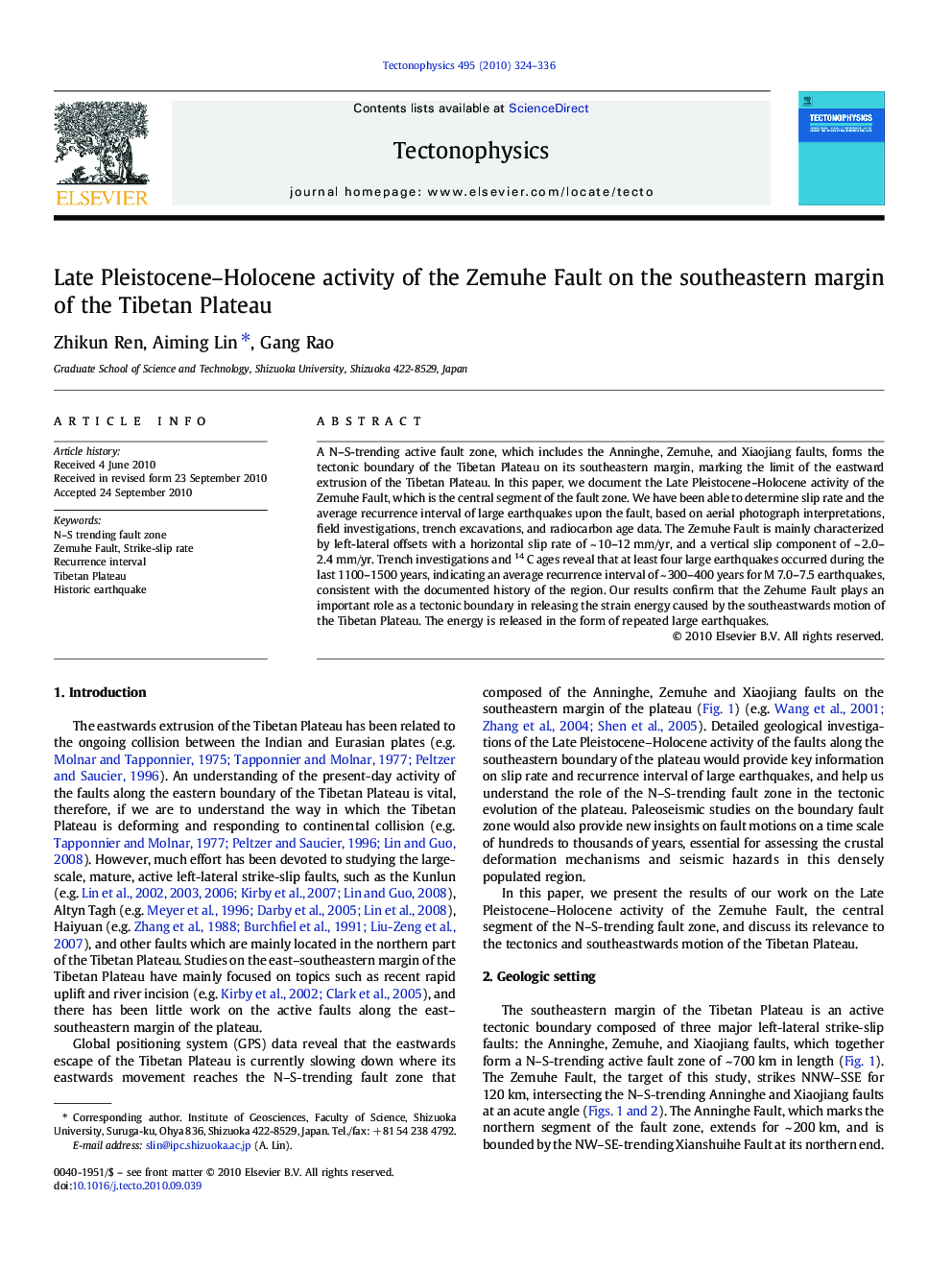| کد مقاله | کد نشریه | سال انتشار | مقاله انگلیسی | نسخه تمام متن |
|---|---|---|---|---|
| 4693301 | 1636856 | 2010 | 13 صفحه PDF | دانلود رایگان |

A N–S-trending active fault zone, which includes the Anninghe, Zemuhe, and Xiaojiang faults, forms the tectonic boundary of the Tibetan Plateau on its southeastern margin, marking the limit of the eastward extrusion of the Tibetan Plateau. In this paper, we document the Late Pleistocene–Holocene activity of the Zemuhe Fault, which is the central segment of the fault zone. We have been able to determine slip rate and the average recurrence interval of large earthquakes upon the fault, based on aerial photograph interpretations, field investigations, trench excavations, and radiocarbon age data. The Zemuhe Fault is mainly characterized by left-lateral offsets with a horizontal slip rate of ~ 10–12 mm/yr, and a vertical slip component of ~ 2.0–2.4 mm/yr. Trench investigations and 14 C ages reveal that at least four large earthquakes occurred during the last 1100–1500 years, indicating an average recurrence interval of ~ 300–400 years for M 7.0–7.5 earthquakes, consistent with the documented history of the region. Our results confirm that the Zehume Fault plays an important role as a tectonic boundary in releasing the strain energy caused by the southeastwards motion of the Tibetan Plateau. The energy is released in the form of repeated large earthquakes.
Graphical AbstractField and trench investigations and 14 C ages reveal that at least four large magnitude earthquakes occurred during the last 1100–1500 years in the Zemuhe Fault in the southeastern margin of the Tibetan Plateau, indicating an average recurrence interval of ~ 300–400 years for M 7.0–7.5 earthquakes, consistent with the documented history of the region. Our results show that the Zemuhe Fault plays an important role as a tectonic boundary in releasing the strain energy caused by the southeastwards motion of the Tibetan Plateau as seismic slip.Figure optionsDownload as PowerPoint slideResearch Highlights
► Average horizontal slip rate of the Zemuhe Fault is 10-12 mm/yr.
► Recurrence interval for M7.0-7.5 earthquakes is 300-400 years.
► The Zemuhe Fault acts as a tectonic boundary in releasing strain energy as seismic slip.
Journal: Tectonophysics - Volume 495, Issues 3–4, 3 December 2010, Pages 324–336